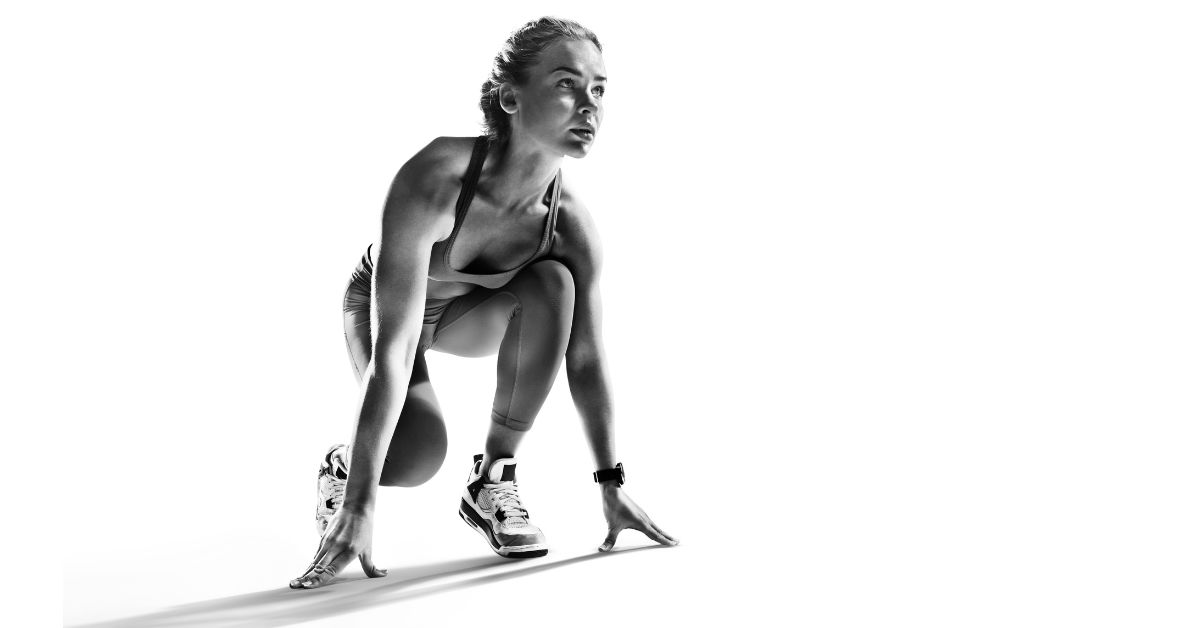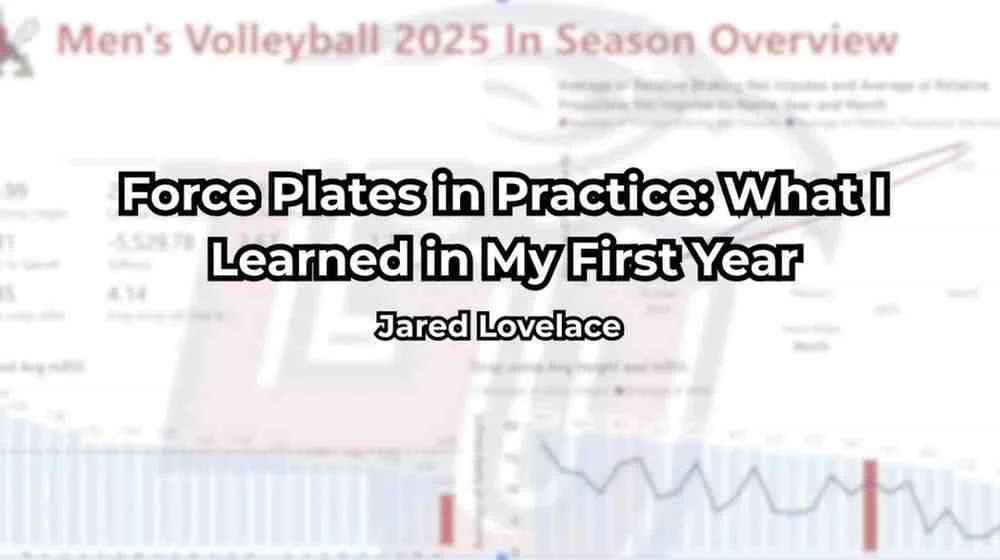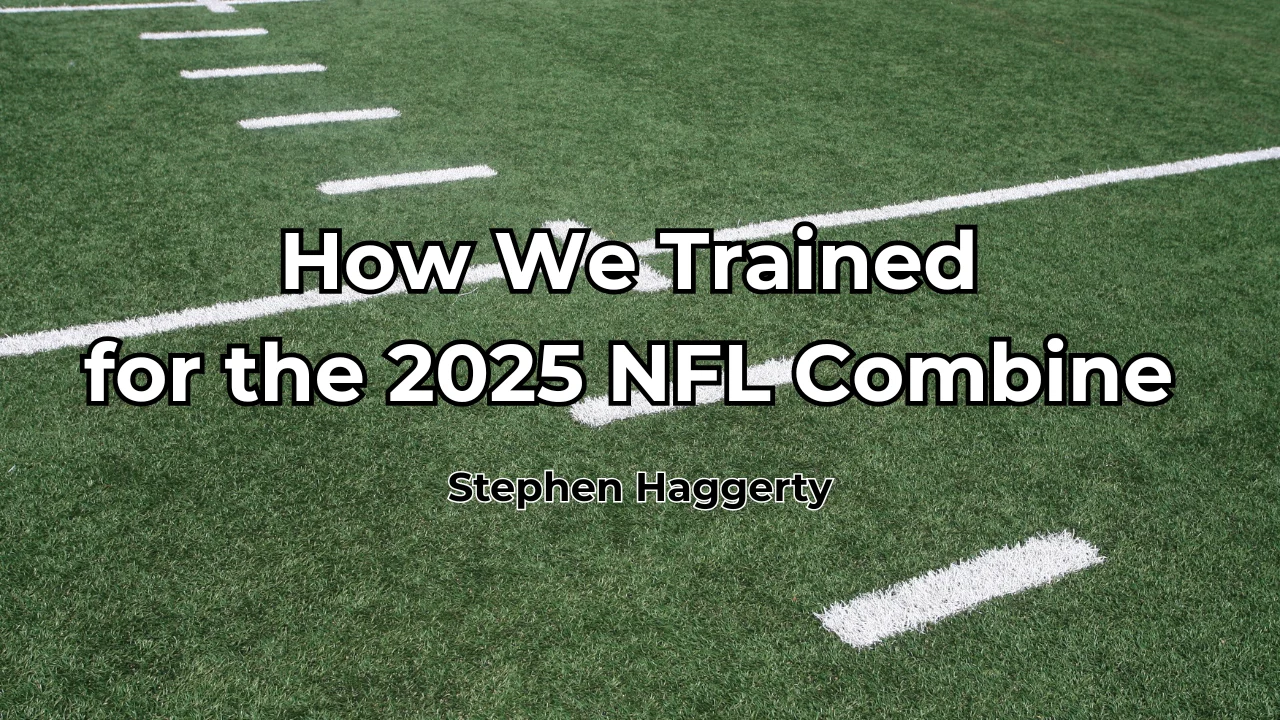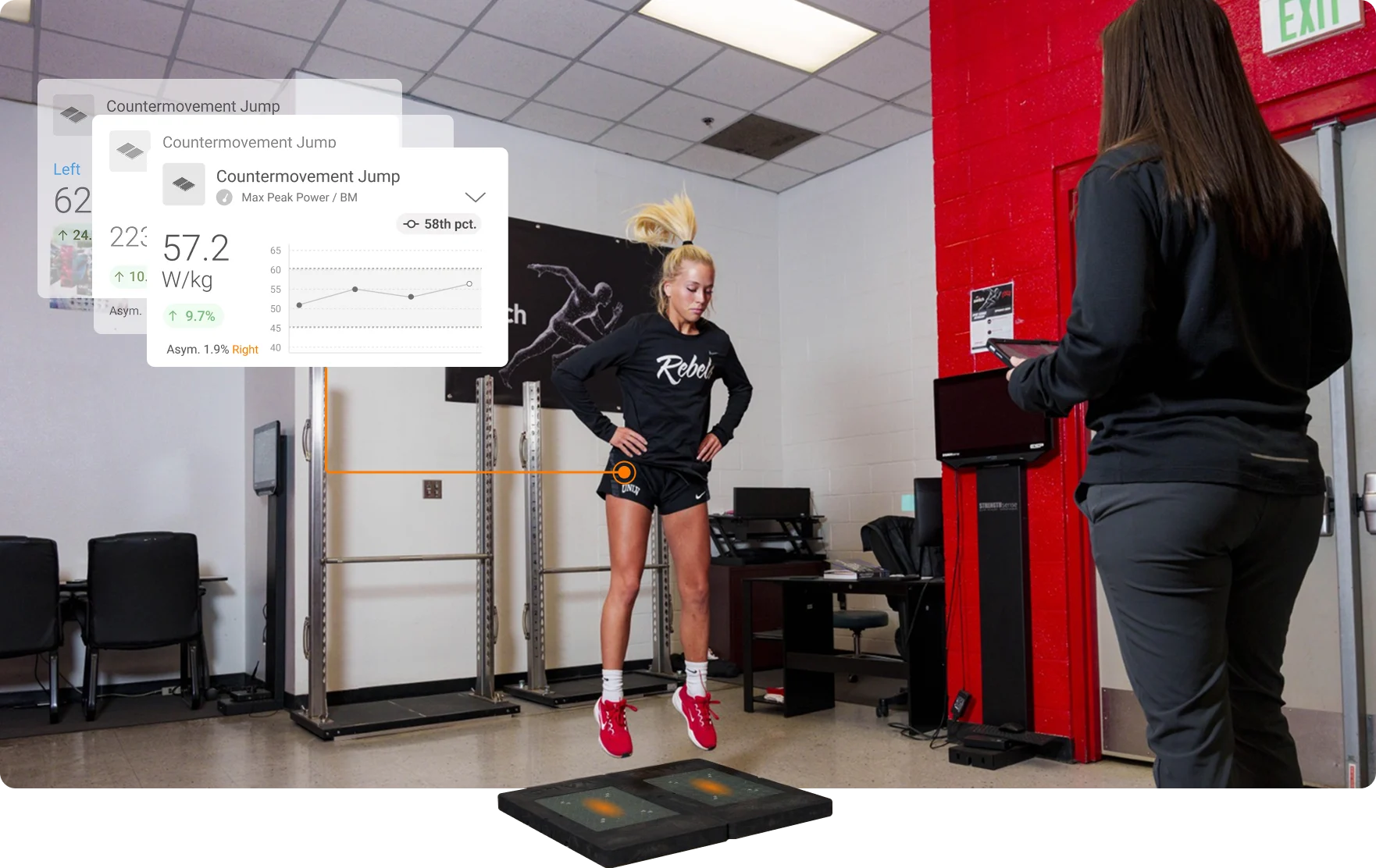Change your perspective, and you will change your perception.
Whoever coined that phrase truly grasped the transformative power of a mindset shift. My own journey of transformation unfolded when I recognized a pervasive issue in my coaching approach. As a traditional coach focusing on skills, fundamentals, and personal baseball lessons for youth and little league players, I observed that many athletes aspired to reach elite levels but lacked the foundational attributes essential for high performance. Critical components like strength, movement skills, posture, mobility, body control, timing, sequencing, and rhythm were missing elements that should have been cultivated from a much earlier age.
I realized that by continuing to offer lessons that provided momentary success, I was inadvertently contributing to a false sense of accomplishment. It became clear that fundamental change was needed, not just in terms of coaching methods, but in my entire approach to athlete development. Driven by this insight, I shifted my perspective and transitioned from being a traditional coach to embracing a more holistic role.
As the Director of Sports Programming at Redline Siouxland, I now lead with innovation and an unwavering commitment to continuous improvement. My focus is on creating comprehensive programs that develop better athletes from the ground up. By integrating advanced training methodologies and emphasizing early development of essential physical attributes, I aim to bridge the gap between aspiration and ability.
This shift in perspective has reshaped my understanding of effective coaching. It has ignited my passion to inspire athletes to see their worth beyond just success, and to strive for the best version of themselves.
At Redline Siouxland, most of our athletes are everyday middle school students participating in school and local travel programs. These young athletes work to improve their skills, but are not yet setting goals beyond high school. Typically, they are coached by volunteer or appointed parents who—despite their best efforts and commitment—often have limited time, resources, and formal education in sports training. Consequently, their 90-minute practices frequently lack structured strength and conditioning programs, proper warm-up routines, and injury prevention exercises crucial for promoting overall athlete well-being and performance.
Research shows that consistent participation & health are more critical than having a highly skilled athlete who is frequently absent due to injuries. Without the ability to consistently participate, all other skills become… Share on X
My mission is to develop an environment where athletes embrace who they are while rising to the challenge of realizing their goals and pursuing their best selves, both personally and athletically. Over the years, my approach has evolved significantly. I’ve come to believe that the most vital attribute for an athlete is not physical ability, but avail-ability. Research shows that consistent participation and health are more critical than having a highly skilled athlete who is frequently absent due to injuries.1 Without the ability to consistently participate and perform, all other skills become secondary. Embracing this mindset has created a perpetual cycle of growth, constantly challenging and redefining my approach to coaching.
Identifying the Problem: The Impact of Optimism Bias
By centering my efforts on enhancing athlete availability, I began to identify the key factors contributing to athletes’ lack of participation. No surprise—injuries were the primary cause of athlete unavailability. However, what truly astonished me was the apparent indifference exhibited by parents and coaches when confronted with this critical issue.
This realization led me to explore the concept of optimism bias, which I discovered was contributing to an increase in athletic injuries—even amid heightened awareness.2 Optimism bias is the tendency to believe that we are less likely to experience negative events compared to others. In the context of sports, this bias is particularly vexing because team sports often involve an element of bravery and invincibility. Athletes and parents are lulled into a false sense of security when reckless play at an early age does not result in serious injury.
In the context of sports, optimism bias is particularly vexing because team sports often involve an element of bravery and invincibility. Share on X
Furthermore, the practice of prioritizing intensity over fundamentals becomes increasingly risky during adolescence, as that stage of development brings about drastic variances in size and strength among athletes. This mismatch can lead to heightened injury risks that are often underestimated due to optimism bias.
Conversely, many coaches encounter athletes who fall behind physically during maturation. These athletes tend to shift into a “protect” mode, becoming more aware of risks and consciously avoiding situations that could cause harm. While this cautious approach reduces their likelihood of injury, it also limits their effectiveness and confidence in performance.
Understanding these dynamics, I recognized a need to address the impact of optimism bias on athletic injuries. To better support all athletes, I had to adapt my coaching methods—both for those who are overly optimistic about their invulnerability and those who are exceedingly cautious.
Locating the Awareness-Action Gap: A Missed Opportunity
Optimism bias wasn’t just a distant theory, it stared me in the face when I witnessed the effects firsthand with one of my athletes.
During a routine warm-up at Redline Siouxland, I observed a significant difference in the ability of a 15-year-old girl (who we’ll call Snips) to execute single-leg, lateral bounds. A dedicated and ambitious sprinter, she’d set a goal of winning the 100 meters at the state track meet this spring and was also an extremely talented hockey player. In Redline classes, Snips executed drills exceptionally well on a day-to-day basis, showing little to no consequences of any physical imbalances. Intrigued by the vast difference in her performance between double-leg activities and single-leg exercises, I approached her.
“Have you ever noticed a difference between your left and right side?” I asked.
“It’s always been that way,” she replied.
“Are you experiencing any soreness, or does anything feel a little off today?”
“Nope, I feel good,” she said.
Her responses were casual, but the disparities I observed were anything but. Concerned, I decided to explore further. I had Snips perform single-leg bench squats on a slightly unstable surface. She completed an easy set of 10 reps on her left leg, but struggled to complete even one balanced rep on her right leg. The severe knee valgus and ankle supination on her right side were alarming, signaling a high risk for injuries like ACL tears.
We tried one more exercise: single-leg Romanian deadlifts with no weight. Again, Snips easily performed 10 reps with her left leg, but produced zero quality reps with her right.
The fact that Snips excelled in track and hockey without apparent issues perhaps contributed to an underlying optimism bias. Her elite athleticism masked the imbalances that posed significant injury risks in other activities. Here was my opportunity to address the injury risk caused by the clear imbalance in mobility and strength between her hips and legs. I seized the moment to inform her about her risks, bolstering my points with statistics and emphasizing the critical importance of muscle balance. I passionately explained how addressing this imbalance could not only prevent injuries but also enhance her overall performance across all sports.
“Okay, thanks coach,” she said. And then she left.
The indifference of her response and the subsequent silence from her parents left me both puzzled and frustrated. Determined to take further action, I emailed her parents with detailed explanations, research, and statistics on the injuries their daughter was at risk for, yet received no response. Figuring my email may not have been received, I then called and left a voice message, encouraging them to reach out with any questions after reading my email. Despite my best efforts to raise awareness, I was unable to generate any meaningful action.
This experience unveiled the stark reality of the awareness-action gap caused by optimism bias. Despite increased awareness of injury prevention, the disconnect between understanding the risks and taking concrete action remained evident.
This wasn’t just a professional insight; it was a personal awakening that made me feel naïve and lacking. I had to improve.
Understanding the Awareness-Action Gap
Reflecting on my experience with Snips, I realized her situation wasn’t unique. To fully grasp why my efforts weren’t yielding the desired results, I needed to understand the underlying factors contributing to this disconnect.
The Growing Awareness of Injury Prevention
In recent years, there has been a significant increase in injury prevention programs and initiatives, such as the Healthy People 2030 initiative, which aims to prevent both intentional and unintentional injuries, including those in youth sports. Despite these efforts, the number of youth athletes being injured is at an all-time high.
According to the National Safety Council, sports and recreational injuries increased by 2% in 2023, following a 20% increase in 2021 and a 12% increase in 2022. In 2023, 3.7 million people were treated in emergency departments for injuries involving sports and recreational equipment, an alarming figure that highlights the extent of the issue.
Why Does the Awareness-Action Gap Exist?
Despite the growing awareness and extensive research, science is unlikely to uncover a 100% foolproof way of preventing injuries. The sheer volume of information on injury prevention available online can be overwhelming, leading to decision paralysis, where athletes and parents are unsure where to start or which direction to take.
The sheer volume of information on injury prevention available online can be overwhelming, leading to decision paralysis, where athletes and parents are unsure where to start or which direction to take. Share on X
Coaches and athletes often fall prey to a lack of personalization and cognitive biases, such as optimism bias, which leads them to underestimate the likelihood of injuries. Additionally, generic information and one-size-fits-all approaches can fail to address the specific needs and circumstances of individual athletes, resulting in inaction.
Ways Coaches Contribute to the Awareness-Action Gap
Reflecting on my own practices, I recognized that coaches—myself included—might inadvertently contribute to this gap by:
- Overwhelming with Information—Providing too much information at once can lead to decision paralysis. I realized that by inundating athletes and parents with an overload of details, I might have been adding to their confusion rather than alleviating it.
- Lack of Credibility—If coaches do not establish credibility or fail to provide evidence-based recommendations, athletes and parents may not trust the information and thus may not take action. I questioned whether I was effectively communicating my expertise and the validity of my advice.
- Generalized Advice—Offering generalized advice that does not consider the unique needs and circumstances of individual athletes can result in inaction. I acknowledged the need to tailor my approach to each athlete’s specific situation.
Continuing Challenges
Despite my newfound understanding of the awareness-action gap and the factors contributing to it, I found myself without a clear path forward. Even with a deep comprehension of the problem, I lacked direction on how to effectively bridge this gap and implement strategies that would lead to tangible action and improved outcomes for my athletes.
A Timely Partnership
During Redline Athletics’ next bi-weekly education call, our leaders announced a new partnership with Demotu’s 3D performance app. We had 90 days to “give it a try” and assess its value. The timing could not have been more perfect given my current challenges with injury prevention. Within minutes of learning about Demotu, I knew I had discovered the very tool that could illuminate my path forward and transform my approach to coaching.
Eager to put Demotu to the test, I checked my Redline class schedule to see if Snips signed up for any of the week’s remaining classes. She was scheduled for the very next day, and within 15 minutes of her class starting, I had completed all six functional assessments with her using the Demotu app.
Within minutes of learning about Demotu, I knew I had discovered the very tool that could illuminate my path forward and transform my approach to coaching. Share on X
Instant results brought a tangible realism to what I had previously discussed, immediately capturing Snips’ interest. The 0 to 100 scoring system and the diagrams illustrating hip and shoulder alignment provided her with a clear understanding of her imbalances. As she scanned the results (Figure 1), her eyes widened.
“Wow, I didn’t realize it was that off,” she murmured. Her body language changed as her feeling of invincibility dissipated.
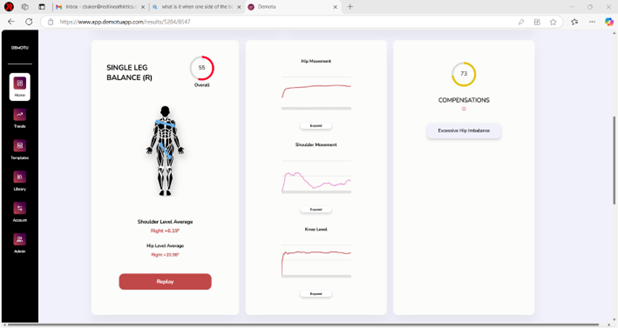
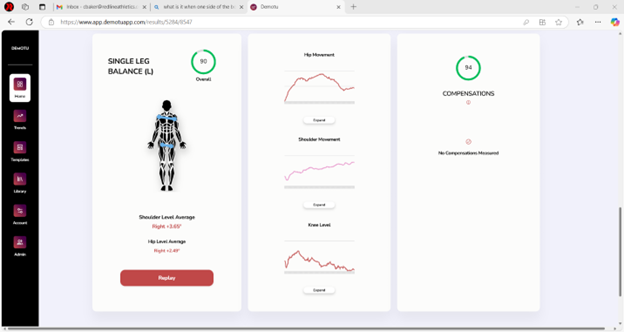
Demotu accomplished in minutes what I’d been striving to convey for weeks. The app translated complex data into intuitive visuals that sparked immediate understanding. Seeing Snips’ transformation, I realized this tool could revolutionize not just individual assessments but the way we approach athlete development as a whole.
Immediate Action for My Athlete
Building on the initial assessments with Demotu, we effectively utilized the app to showcase and pinpoint Snips’ injury risks. Demotu’s PDF summary option provided a straightforward, point-and-click way for me to send her assessment summary to her parents.
To my delight, this feature sparked their interest and initiated meaningful conversations about her well-being. I showed them the app and after a quick tour of its features, they both felt confident in their ability to put it to use. The app graphs previous data alongside new assessments, allowing them to visualize changes over time in both movement scores and mechanical metrics, turning risk from hypothetical to quantifiable.
With her parents’ involvement, I created and assigned a tailored workout plan for Snips. This included the Hip Flexor Stretch, Single-Leg Romanian Deadlifts, Side-Lying Reverse Clamshells (targeting glute stability), and Copenhagen Planks with knee bent, specifically addressing her hip imbalance and compensations. Demotu’s versatility and portability allow Snips to supplement her exercises alongside her in-season hockey program. Demotu’s transparency allows all her coaches to view her plan and track her progress, fostering a cohesive approach to her training.
Snips was particularly impressed by how the app increased her awareness of her body and mechanics. She mentioned feeling more conscious of her form and found herself implementing new habits and checking her posture throughout the day. Her parents have also started recognizing her day-to-day actions that contribute to her imbalances—like sitting with one leg tucked for long car rides, for example—and they can prompt her to make adjustments based on Demotu’s alerts. Who would have thought that a single app could foster such a cohesive support system for an athlete?
Snips’ Progress
Nearly 60 days have passed, and I must say, the most significant improvement I’ve observed in Snips is the near complete elimination of her kinesthetic dysmetria. While she has always been able to follow coaching cues, her self-correction is now evident, accurate, and deliberate. We plan to reassess her functional movements after the hockey season and adjust for pre-season track. I’m eager to see the results.
Demotu’s Continuing Impact on Redline Siouxland
Introducing Demotu 3D Analysis into our training at Redline Siouxland has been nothing short of transformative. What began as a solution for a single athlete has evolved into a cornerstone of our coaching methodology, reshaping how we approach injury prevention and athlete development.
Effortless Adoption and Time-Saving Assessments
Implementing Demotu has been remarkably smooth. With no setup required, a single assessment can be completed in as little as two minutes. Coaches can opt to perform all six movement evaluations and fifteen joint comparison tests, completing them in about twenty minutes. This rapid process allows us to provide comprehensive evaluations without sacrificing valuable training time.
With Demotu, coaches can opt to perform all six movement evaluations and fifteen joint comparison tests, completing them in about twenty minutes. Share on X
Using your device’s camera, position the athlete about ten feet away and the Demotu app will accurately locate key joints and limbs. Simply hit the record button, which initiates the assessment, and the video stops automatically when the required movement is completed.
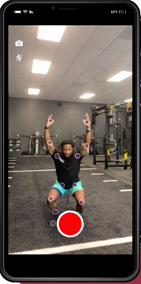
The ease of Demotu’s operation allows our coaches to decide how and when to use the program. Assessments can be conducted spontaneously during sessions without disrupting class flow or needing to schedule separate appointments. This capability ensures we can fully assess every member, embedding injury prevention into the very fabric of our programs.
Cultivating a Culture of Awareness
The impact of Demotu extends beyond individual assessments—it has cultivated a culture of awareness and attentiveness throughout Redline Siouxland. Athletes are becoming more conscious of their movements and form, while coaches are continuously engaged in monitoring and supporting their progress. Parents appreciate the transparency and involvement, strengthening trust in our programs.
All coaches at Redline Siouxland have access to the Demotu platform, facilitating teamwork and coordination. Sharing data and insights has never been easier, allowing coaches to adjust training plans in real time and ensure consistency in our methods. This unified approach not only enhances the quality of coaching, but also contributes to our collective commitment to continuous improvement.
A Personalized Approach & Vision for Widespread Impact
At Redline Siouxland, we pride ourselves on avoiding a cookie-cutter mentality. With Demotu, we can now tailor every aspect of our training. The app offers individualized recommendations based on each athlete’s unique movement profile, guiding targeted interventions to correct issues before they lead to injury. This individualized attention ensures that each athlete receives the specific support they need to excel.
The Demotu app offers individualized recommendations based on each athlete’s unique movement profile, guiding targeted interventions to correct issues before they lead to injury. Share on X
At its highest potential, Demotu could exist in every school or doctor’s office, providing teachers, healthcare providers, and educators with the information and direction needed to help not only athletes but all children address potential injury risks head-on. By making such advanced tools accessible, we can foster a generation that values health, well-being, and proactive prevention.
Overcoming Uncertainty and Embracing Progress
At a time when I felt surrounded by youth athletic injuries and powerless to make a difference, my heart urged me to do more, but my head was overwhelmed with information. This left me stuck paralyzed by uncertainty and doubt. Then, the Demotu 3D app became available, providing me with the guidance and inspiration I needed to confidently act.
As the saying goes, “A journey of a thousand miles begins with a single step.” Demotu helped me—and by extension, my athletes—take that crucial first step.
References
- Healthy People 2030. “Building a Healthier Future for All.”
- Weinstein. “Unrealistic optimism about susceptibility to health problems.”

